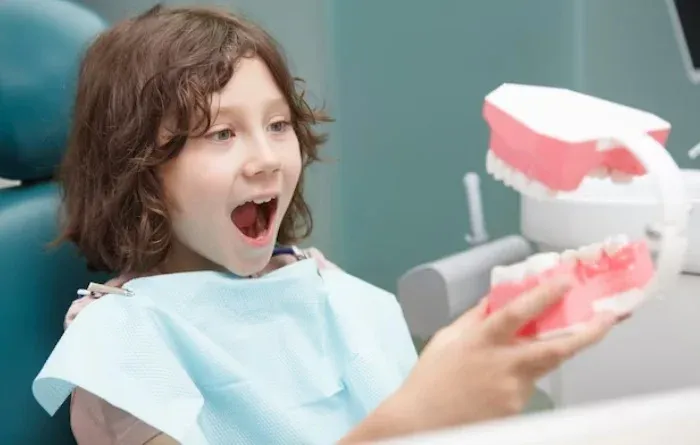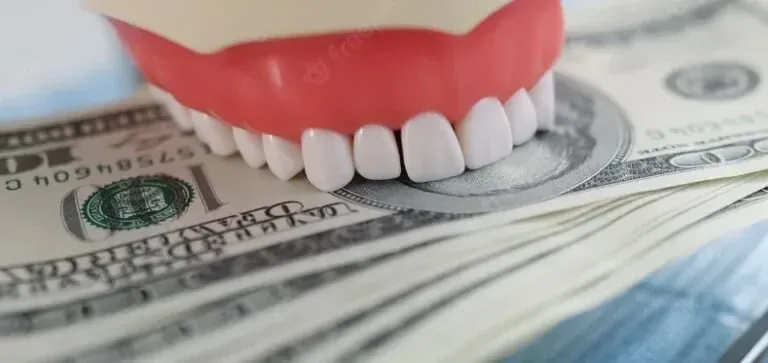Xray of Child’s Teeth: Should the pediatric dentist Do It?
X-rays of child’s teeth are essential for fostering excellent oral health and spotting any issues early…
X-rays of child’s teeth are essential for fostering excellent oral health and spotting any issues early on, which can result in more suitable and minimally intrusive treatment alternatives.
Xray of child’s teeth:
Dental radiographs, commonly referred to as X-rays of a child’s teeth, are pictures that a dentist or dental radiologist takes to give a close-up look at the mouth’s soft tissues, jawbones, and teeth.
Cavities, gum disease, and anomalies in the bone are just a few of the dental conditions that these scans may help dentists identify and treat.
Dental x-rays are often safe for kids, and they are frequently advised to maintain good dental health. Nonetheless, dentists take extra care to reduce radiation exposure and only use x-rays when required.
A dentist or dental radiologist usually takes children’s dental x-rays at a dental office or clinic.
The steps in the procedure are :
The youngster must remove any jewelry or other metal items, and a lead apron must be worn to shield the body from radiation.
Positioning: The dental expert will place a tiny x-ray film or digital sensor in the kid’s mouth while the youngster is requested to sit or lie down.
They could use a gadget to keep the film or sensor in place.
The dental expert will turn on the x-ray machine and take the required pictures.
As the x-ray is being taken, the youngster will be instructed to stay motionless and hold their breath briefly.
Repositioning: The dentist may move the camera or sensor to get a fresh perspective of the jawbone and teeth.
The procedure is often short and painless, and the youngster may continue their regular activities afterward. The x-rays will be examined by a dentist or radiologist, who will utilize the data to identify any dental issues and create a treatment plan.
Xray of baby teeth and permanent teeth:
xray of baby teeh and permanent teeth, sometimes called radiographs, taken to evaluate the condition and growth of the teeth and jawbones.
X-rays of infant teeth and permanent teeth differ in the following ways:
radiographs of the infant’s teeth:
To check for cavities between teeth in developing teeth, bitewing x-rays are frequently employed.
Periapical x-rays can examine infant teeth’ roots, track their growth, and look for abnormalities or damage.Due to the size and rarity of baby teeth, the number of x-rays obtained may be less than for permanent teeth.
Permanent teeth X-rays:
The whole mouth, including the upper and lower jaws and teeth, may be seen in a panoramic x-ray.
Bitewing x-rays are frequently used to detect gum disease, monitor dental fillings, and assess the existence of cavitiesPeriapical x-rays can examine permanent tooth roots, track their development, and find anomalies.
Both baby and permanent teeth can be radiographed using a similar technique. The dental expert will take the necessary procedures to protect the child’s safety and reduce radiation exposure.
Dental x-rays are a valuable diagnostic tool that aids dentists in spotting and treating dental issues before they become serious, improving oral health.
When do permanent teeth shows up on x ray?
Before erupting into the mouth, permanent teeth grow in the jawbone.
When do permanent teeth shows up on x ray?well ,Often, permanent teeth may be detected on an X-ray when they are still developing and have not yet broken through the gums.
Many variables, including the person’s age, the kind of X-ray being used, and the particular tooth being studied, might affect when permanent teeth first appear on X-rays.
The first permanent molars typically start to erupt around age 4-5, and further permanent teeth may be seen on an X-ray as they continue to grow and burst over the following years.
To properly analyze the growth and location of all permanent teeth, it may be necessary to take repeated X-rays. It’s crucial to remember that not all teeth may be seen on a single X-ray image.
For additional information on when permanent teeth may be seen on X-rays and what specialized imaging tests may be required for your unique circumstances, speak with your dentist or orthodontist.
Xrays of 5 year olds teeth:
The growth and location of a child’s primary (baby) teeth and any underlying permanent teeth may be seen in an x-ray of 5 year olds teeth.
The first permanent molars may already form at this age and are frequently seen on X-rays.At this age, X-rays evaluate the child’s dental growth and spot any early-stage issues such as tooth decay, abnormal tooth development, or tooth crowding. Using this data, a treatment strategy can be developed to address problems and advance excellent oral health.
Dentists often assess the advantages of taking X-rays against the possible hazards and restrict the frequency and amount of X-rays taken, especially in young children, because X-rays expose patients to radiation.
While selecting whether or not to take X-rays, your child’s dentist will take into account their age, dental history, and current oral health condition and will take precautions to reduce your child’s exposure to radiation during the operation.







